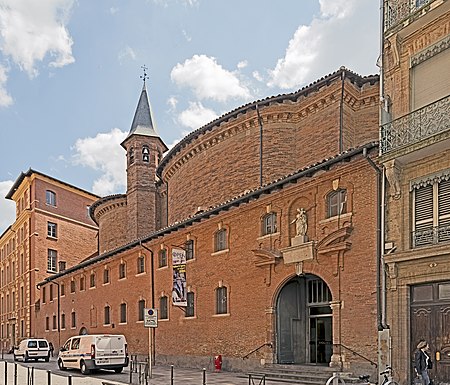Saint-Jérôme Church (Toulouse)
17th-century Roman Catholic church buildings in FranceBaroque church buildings in FranceInfobox religious building with unknown affiliationRoman Catholic churches in Toulouse

The church of the Sanctuaire Saint-Jérôme (former chapel of the Pénitents bleus), rue du Lieutenant-Colonel-Pélissier (former rue des Pénitents bleus), is a church built by the Compagnie royale des Pénitents bleus de Toulouse. It was built in the 17th century by architect Pierre Levesville under Louis XIII, the first French king to join the brotherhood. The Pénitents bleus called on Toulouse's finest artists to decorate their chapel, which didn't suffer too much during the French Revolution.
Excerpt from the Wikipedia article Saint-Jérôme Church (Toulouse) (License: CC BY-SA 3.0, Authors, Images).Saint-Jérôme Church (Toulouse)
Rue du Lieutenant-Colonel Pélissier, Toulouse Toulouse Centre
Geographical coordinates (GPS) Address External links Nearby Places Show on map
Geographical coordinates (GPS)
| Latitude | Longitude |
|---|---|
| N 43.6033 ° | E 1.4462 ° |
Address
Église Saint-Jérôme
Rue du Lieutenant-Colonel Pélissier
31000 Toulouse, Toulouse Centre
Occitania, France
Open on Google Maps






